Were the Salem Witch Trials Caused by Moldy Grain?

This autumn marks an important anniversary in the Salem witch trials - 325 years ago, Salem-area residents began harvesting a crop that launched a nightmare. The young girls who accused dozens of men, women, and children of witchcraft might have been under the influence of…tainted rye.
In 1976, behavioral scientist Linnda Caporael first suggested the theory. Caporael pointed out how the summer of 1691 had been terribly rainy and wet. A type of fungus, ergot, is suspected to have grown on the rye, a staple crop of the community, which was later eaten by the area residents. Ergot is a hallucinogenic-LSD is derived from the substance-and Caporael suggested the girls who believed they were being taunted by witches were actually under the effects of a common grain fungus.
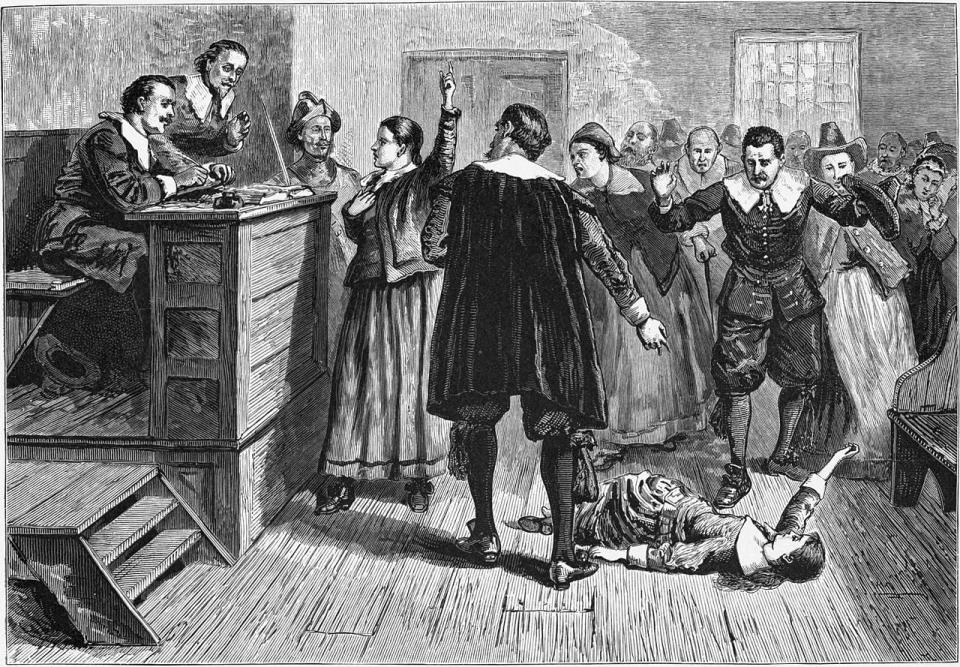
The grain fungus was so common in both America and Europe that people long thought it was part of the plant, says George Wong, an associate professor of botany at the University of Hawaii.
"They didn't think anything about grinding up [the fungus] and putting it in bread," Wong says.
Caporael first suggested the Salem witch trial accusers were suffering from convulsive ergotism. According to Wong, convulsive ergotism affects the nervous system. "You're getting fits, muscle spasms, hallucinations, and delusions," he says.
Muscle spasms, hallucinations, and delusions are all symptoms of ergot poisoning.
The hallucinations, Caporael suggested, were the reason the Salem witch accusers thought they were being pinched by witches or being forced to sign their name in the Devil's Book.
The theory that the accusers were under the influence continues to gain support. Last May, a study published in JAMA Dermatology argued that the accusers were likely under the influence of tainted rye. The researchers contend the accusers' skin legions were consistent with a common symptom of convulsive ergotism.
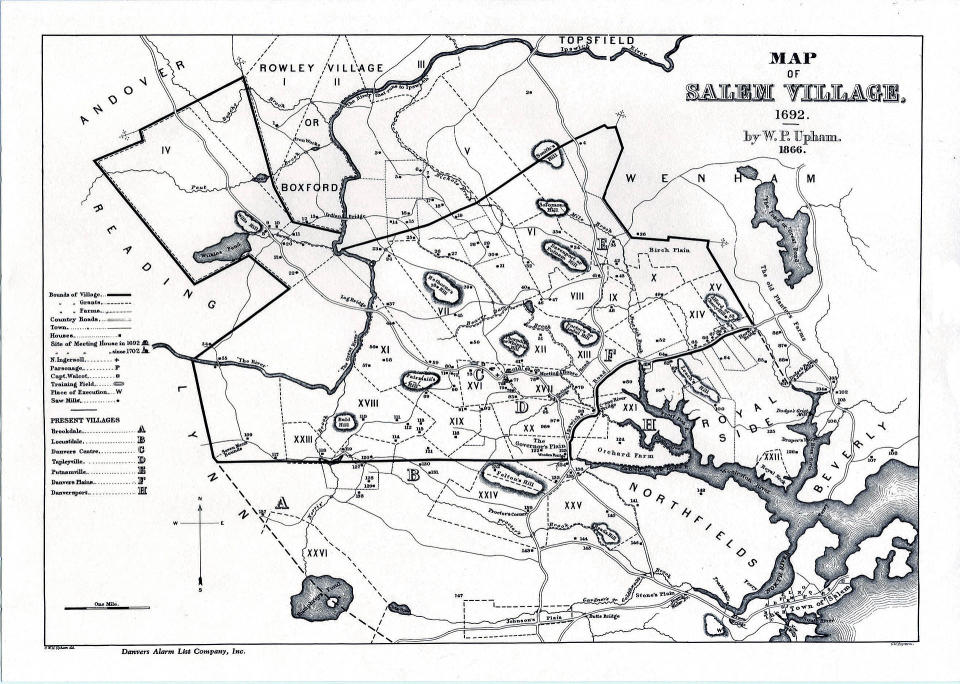
Other facts support the idea the accusers were under the influence. For example, most of the accusers lived in the western section of Salem, an area that had swampy meadows where fungi could easily fester. In contrast, most of the accused witches lived in the eastern section of Salem, which seemed to have less contamination.
The accusations came from western Salem, where swampy meadows could have allowed fungi to easily fester.
The accusers also tended to be young girls and women. Research suggests that women and children were more apt to be afflicted by the effects of ergotism than men.
When the symptoms first began in December 1691, Salem authorities didn't initially suspect witchcraft. About eight girls, including 11-year-old Abigail Williams, began to wretch and have seizures. The blond niece of the reverend, Abigail had always been a well-behaved girl, and her family was stunned by her new behavior. Abigail claimed someone was pinching and biting her. She yelped like a dog and leapt about, as if she was trying to fly.
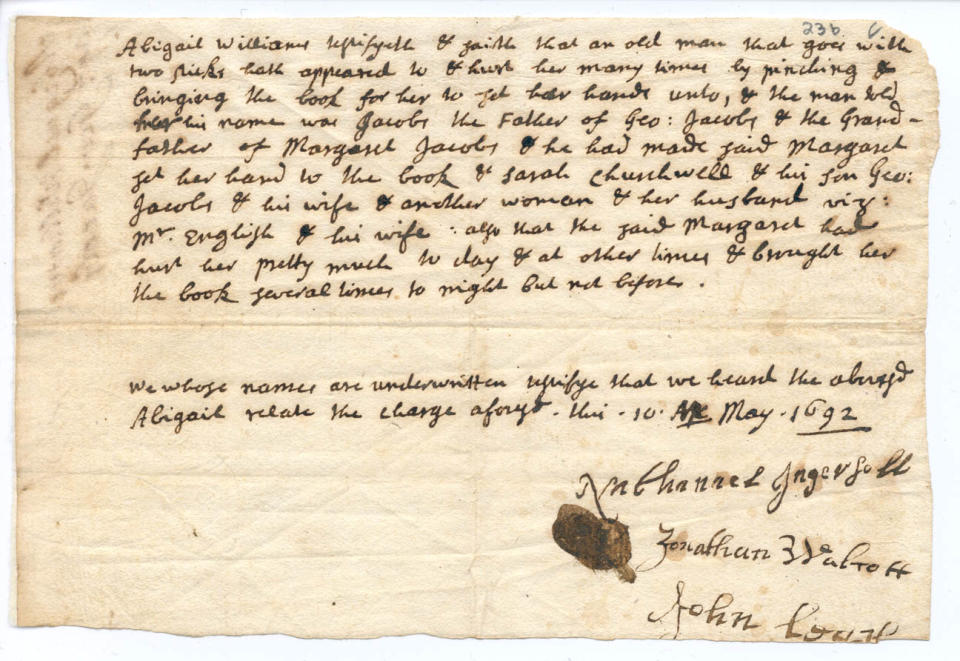
Other girls in the area soon followed Abigail's mysterious ways. None of the girls ran a fever, and none were known to be epileptic. At times, they were quiet and reserved. At other times, their speech was garbled and they flailed about in a convulsive fit.
A series of doctors examined the girls and were at a loss. In February 1692, a doctor suggested the girls were bewitched. The suggestion stuck, and the "bewitched" girls accused a slave and two elderly women of witchcraft.
A series of doctors examined the girls and were at a loss. When one suggested they were bewitched, it stuck.
In the following months, the bewitched continued to convulse. Their condition alarmed Salem authorities, who sought to hold the guilty parties responsible. The bewitched were asked to name who hurt them, and dozens of names were offered.
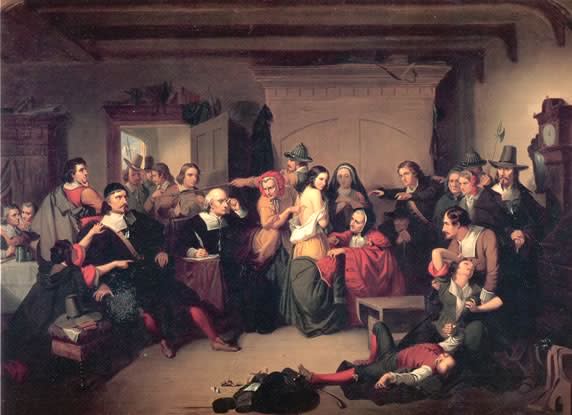
Salem authorities interrogated the accused, questioned the bewitched girls, and created a narrative about an epidemic of witchcraft. In their version, a meeting in a local meadow had occurred. Accused witches flew on broomsticks to worship the devil. At the meeting, some ate red bread and signed their name in the Devil's Book.
The authorities also accused the "witches" of having familiars. Most familiars were described as housecats, although a snake and a few dogs were also accused of being the devil in disguise.
In their investigations, Salem authorities looked for physical evidence of a devil's "teat" that was supposedly used to milk the familiar. The accused were also examined for any markings or deformities that might be seen as a devil's mark.
In court, the afflicted girls claimed they could see the defendants' apparitions of flying into the ceiling rafters.
The physical evidence was enough to arrest a suspect and convene a jury. During the witch trials, the courts primarily relied on "spectral evidence," or claims from witnesses that the accused practiced witchcraft and used their powers to attack villagers.
In the tamer accusations, the bewitched claimed they were poked or bitten by the witches. In the more serious accounts, the bewitched testified that the witches tried to pull out their bowels. A few accusers said they had to fight off a witch's insistence that she sign the Devil's Book and join the growing ranks of devil worshipers.
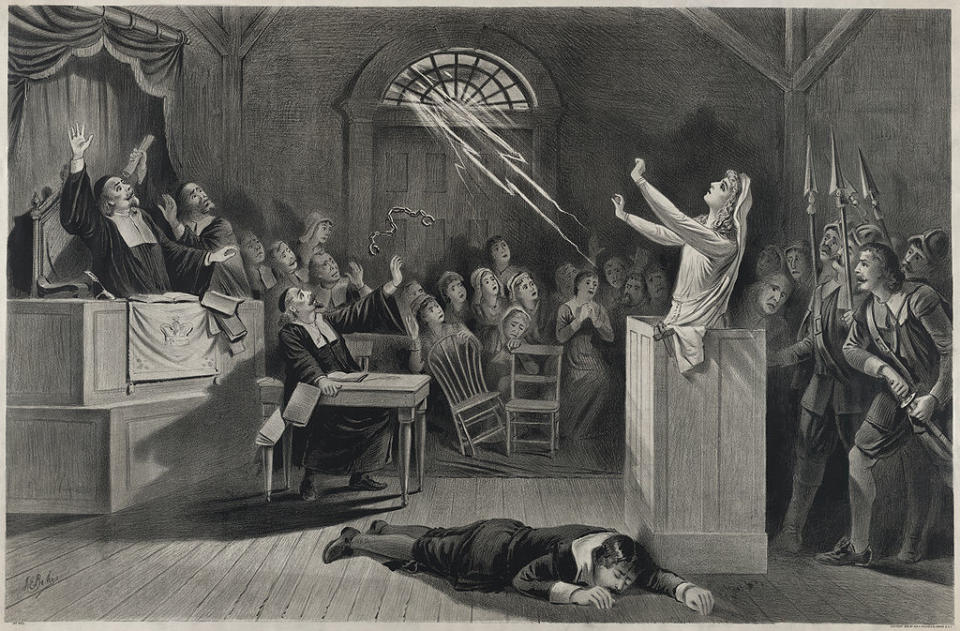
In court, the accused witches were stunned as the girls claimed they could see their apparitions flying from the witness stand and into the ceiling rafters.
Some couldn't take the testimony seriously. Susannah Martin, a 70-year-old widow, stood in disbelief as her accusers flailed around the courtroom. One girl seized on the ground. Another pointed at Martin and then began convulsing. A third took off her glove and threw it at Martin.
The glove throwing was ridiculous to Martin and she began to laugh and told the magistrates it was a "folly."
Martin maintained her innocence and was hung in July. Many of the accused witches readily confessed, which proved to be a sensible strategy. Confessed witches remained in jail, but deniers were executed. As the winter faded into a dry summer, a cart rumbled through the village, carrying doomed witches to the gallows. By the end of the summer, 14 women, five men, and two dogs were executed.
Then, the accusations stopped abruptly. The Salem area was in a drought, the type that made it difficult for the fungus to return to the rye crops. The violence was over by September. The apparitions disappeared. No one saw any more witches in the fireplace. The biting, pinching, and poking had ended.
Download the free Country Living Now app to stay up-to-date on the latest country decor, craft ideas, comfort food recipes, and more .
You Might Also Like

